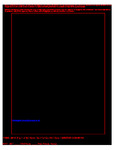Environmental Temperature and Material Characterisation with Planar Evanescent Microwave Sensors for Environmental Analysis
| dc.contributor.author | Lavers, C | |
| dc.contributor.author | Fisk, J | |
| dc.contributor.author | Lavers, B | |
| dc.date.accessioned | 2020-11-03T09:58:26Z | |
| dc.date.issued | 2020-11-08 | |
| dc.identifier.isbn | 978-1-5106-3861-7 | |
| dc.identifier.issn | 0277-786X | |
| dc.identifier.issn | 1996-756X | |
| dc.identifier.uri | http://hdl.handle.net/10026.1/16620 | |
| dc.description.abstract |
We discuss a microwave planar evanescent waveguide sensor, based on a patented technology demonstrator (2016), for a range of potential UAV platform skin-embedded waveguide sensing applications such as: refractive index sensing, temperature sensing, or surface corrosion. Evanescent microwave sensors can probe the near surface region from millimetre to metric scales, with minimal direct radiation into the external environment, ideal for evading detection, and able of detecting various dielectric or metal materials adjacent to the surface. This paper examines evanescent planar sensor use as an environmental evanescent sensor to both detect and quantify metal or dielectrics without direct contact, measuring material loss from chosen waveguide materials, and waveguide surface cladding materials. We also present microwave transmission for a range of temperature sensor configurations, with good sensitivity across a broad range of temperature-related applications, including temperature hysteresis. [1]. | |
| dc.format.extent | 115252t-115252t-9- | |
| dc.language.iso | en | |
| dc.publisher | SPIE | |
| dc.subject | evanescent | |
| dc.subject | environmental temperature sensing | |
| dc.subject | planar microwave sensor | |
| dc.title | Environmental Temperature and Material Characterisation with Planar Evanescent Microwave Sensors for Environmental Analysis | |
| dc.type | conference | |
| dc.type | Proceedings Paper | |
| plymouth.date-start | 2020-11-09 | |
| plymouth.date-finish | 2020-11-13 | |
| plymouth.volume | 11525 | |
| plymouth.conference-name | SPIE Future Sensing Technologies, 9-13 November 2020 | |
| plymouth.publication-status | Published | |
| plymouth.journal | SPIE Future Sensing Technologies | |
| dc.identifier.doi | 10.1117/12.2585163 | |
| plymouth.organisational-group | /Plymouth | |
| plymouth.organisational-group | /Plymouth/Faculty of Science and Engineering | |
| plymouth.organisational-group | /Plymouth/Users by role | |
| dcterms.dateAccepted | 2020-10-23 | |
| dc.rights.embargodate | 2020-11-17 | |
| dc.identifier.eissn | 1996-756X | |
| dc.rights.embargoperiod | Not known | |
| rioxxterms.versionofrecord | 10.1117/12.2585163 | |
| rioxxterms.licenseref.uri | http://www.rioxx.net/licenses/all-rights-reserved | |
| rioxxterms.licenseref.startdate | 2020-11-08 | |
| rioxxterms.type | Conference Paper/Proceeding/Abstract |


